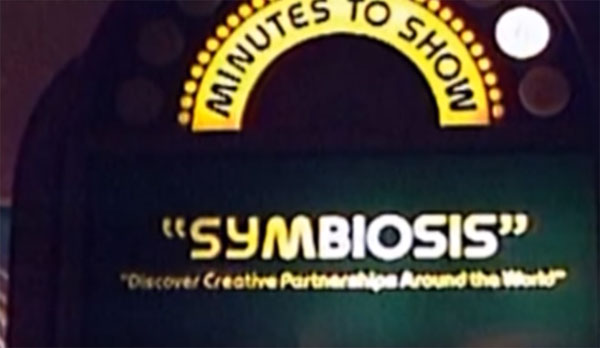
In January 2020, Disney unveiled their new film Awesome Planet in EPCOT’s Land pavilion, and reviews are generally positive. Its predecessor, Circle Of Life: An Environmental Fable, had been in place for 23 years. There was a definite need for an update. Many guests probably did not realize that another film had occupied this location until January 1995. Symbiosis was an opening day attraction in EPCOT Center and provided an ambitious story about environmental preservation.
I visited EPCOT Center during the ’80s and ’90s and watched Symbiosis, but I have almost no memory of it. The 18-minute 70mm film deserves more attention, so I’m giving it a close review here. It was directed by Paul Gerber, who also shot The Spirit of Norway post-show film alongside Maelstrom. Voice actor Phillip L. Clarke narrated the story; his voice was part of numerous Disney projects.
What interests me about Symbiosis is its reputation as being too dry for a theme park. I’m curious to learn how much that perception holds up now. It contains no Disney characters, but that was standard for EPCOT Center in 1982. Circle of Life did re-use some parts of the original film, but in a different format. Even so, the amount of talk about this opening-day film remains limited among fans today.
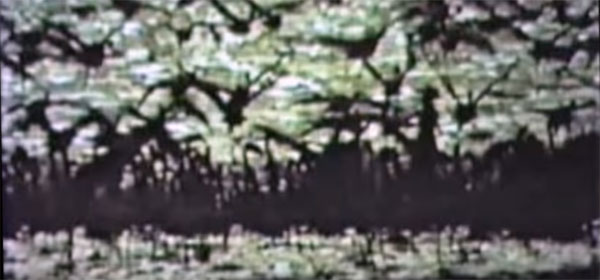
The Web of Life
Let’s step inside the Harvest Theater to learn more about creative partnerships around the world, courtesy of Kraft. The film’s quiet tone stands out from the start. It’s similar to the movie inside the original Universe of Energy. Both are large-screen films that provide cool footage and a serious message. You can already see the change at EPCOT with films at The Living Seas and Norway in the late ‘80s. Symbiosis doesn’t feel dated but is a sedate experience.
Early shots glide over landscapes with the expected mountain, desert, and water scenes. The next stage depicts wildlife through cool footage of animal herds and flocks of birds. Ultimately, humans enter the picture to hunt, fish, and lead sled dogs in Alaska. It sets up what is essentially a precursor to The Lion King’s “Circle of Life” sequence. Clarke uses the phrase “the web of life” to describe connections between all living things on this awesome planet.
This movie uses a direct approach to explore humans’ negative impact on the environment. It provides a more forward-thinking approach than some leaders are taking 40 years later! After a grand shot above Hoover Dam, images of traffic and crowds remind us that our world has challenges. Technology can be remarkable, but it has potential to devastate the land.
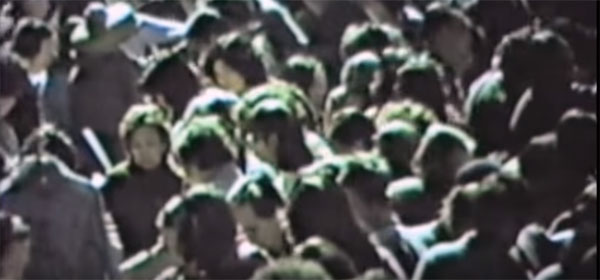
Science Saves the Day
At this point, I must confess that Symbiosis is a little boring. It remains an impressive film with a great message, but I can’t debunk the reputation. Even when describing amazing technology, the approach is somber. We observe the work of the International Rice Research Institute to solve food problems. Clarke explains the mix of approaches from yesterday and today. I’m definitely on board to learn about these technologies; they represent the essence of the original EPCOT Center.
One highlight takes us inside the windmills of Holland for a classic way to manage water. I like how this story connects that process to work by sophisticated laboratories. While that example is positive, it leads into a surprisingly candid look at environmental destruction. The Dust Bowl is an easy way to showcase mistreatment of the land. We also see the dangers of deforestation, pollution, and wildfires. I appreciate honest talk about industry’s failures. Technology can be amazing but also destructive.
These problems set the stage for a focus on restoration; the clean-up of the Thames River is one example. This segment also includes some of the film’s most impressive footage. Shots from the air of Germany’s Black Forest and trees in Sweden offer beautiful views. These places only survive if we rein in “technological man”, which Clarke uses to describe our worst impulses. It’s a tricky balance to keep everything in check and save our planet.
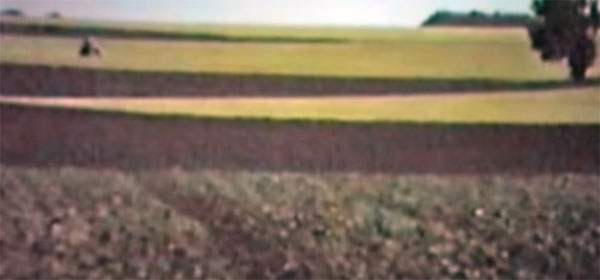
Rebirth Through Technology
Symbiosis walks a tightrope between criticizing technology and offering it as a recipe for our salvation. We return to the Dust Bowl and then shift to open farmland. Pesticides are presented as both helpful and dangerous, which is a challenging message. Nothing in the universe lives in a vacuum. Solutions exist to solve problems, and they include technology.
What surprises me is how much this movie connects to conversations 40 years later. Climate change is drastically changing our planet, but there may not be the will to do what’s necessary. Ideas of “the web of life” and connections among every living thing are relevant. Uncontrolled development and environmental destruction remain a problem, despite advances.
EPCOT Center was different from the park we know today, but Symbiosis was even an outlier in 1982. It didn’t include a catchy theme song or grand presentation. The down-to-earth look at our environment sidestepped the formula. I’m glad that it played for more than 12 years and hope it made a small difference. If you haven’t watched it, I would recommend this version on YouTube from Martin’s Videos. The presentation has changed a lot with Awesome Planet, but I appreciate that the prevailing theme remains. We must listen to the land before it’s too late to find that balance again.
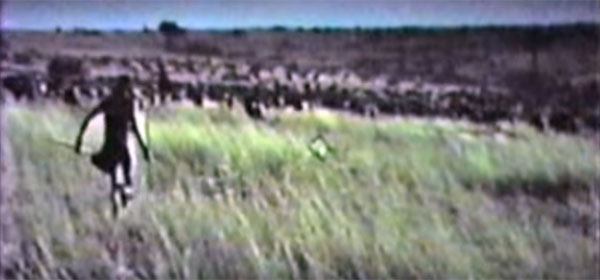
Related Articles: Symbiosis
Back Over the Falls: A Tribute to Maelstrom
Mystic Flights: A Tribute to Magic Journeys
Ranking EPCOT Center’s Future World Pavilions
You Make the World Go Round: A Tribute to Universe of Energy



Leave a Reply